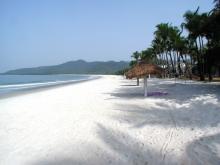By Tanu Jalloh
In my last article on this page I looked at the World Bank’s annual rankings of Doing Businessand what was Sierra Leone doing on those scalessince 2008. However, in that article I deliberately just laid the records or statistics bare andwithout any accompanying analyses, just so that a forum is created to tell a detailed story today.
Of course my analyses now should be able to make reference to those summaries, thereby broadeningour readership’s level of appreciation of the topic in question. It’s a bit complex though, with figures, dates, instances, ratings and justifications.
So how far has the country come on Doing Business ranking each year between 2008 and 2013. This year marks the tenth in a series of annual reports investigating the regulations that enhance business activity and those that constrain it. Thus, Doing Business presents quantitative indicators on business regulations and the protection of property rights that can be, on the average, compared to some 185 economies across the world. The number of economies rated or ranked in a year, I would think,iscontingent on the availability of verifiable and credible information regarding the variables factored into the reporting process.
For example, regulations affecting eleven areas of the life of a business are covered: starting a business, dealing with construction permits, getting electricity, registering property, getting credit, protecting investors, paying taxes, trading across borders, enforcing contracts, resolving insolvency and employing workers. Therefore, most data in the Doing Businessranking for each year under review should be current as of June 1, the previous year.
My argument is that some of the explanationsgiven by World Bank could be said to be limited, obviously for technical reasons.Therefore they are likely to be lacking in their attempt to create for critical analysis of the data elicited and presented. You would realise that while the above indicators or regulations (in the preceding paragraph) could be used to analyse economic outcomes and to identify what reforms of such business regulations have worked, where and why, they could not be categorical on also how, where and when they did not work at all and why. That is of the essence hereat Politico.
As you would imagine therefore and given the scope of this piece, I would attempt to critically look at some of those key variables, or areas as stated in the reports, to be able to increase understandingby interpretingSierra Leone’s doing business environment in the wider context of its economy. Mind you the difference in how low it ranked or how badly the country performed in most of the last five years was only adequately compensated for in the “starting a business” category. This was why when there was the urge to sell the country using the Doing Business as a political capital, all efforts were limited to the legal framework that ensured businesses were registered quickly and at a one-stop shop kind of.
For me the country missed out on its biggest opportunity after 2012 when it was rated 76 under ‘paying taxes’ from between 160 and 159 rankings three years before 2012. It slipped back right down coming into 2013 and ranked 117 under that category. It means policies around the country’s tax regime were not sustainably implemented.I’ll discuss sustainable tax administration for wealth creation in subsequent publications.
Meanwhile, the duration it takes for import and export keeps appreciating right through the five years under review. Also, the country continues to exhibit a steady improvement in ‘investor protection’. Electricity did not factor three years before 2012,apparently because the supply was just not there. Between 2012 and 2013 when electricity was considered, the country ranked 174 and 176 respectively out of 185. This is far away from meeting the country’s target of energy supply to boost industrialisation. It is nonetheless key for its export potential and investment attraction, but also integral to agricultural productivity.
On the whole, but for ‘starting a business’, improvements have not been sustainable in the other categories. Apart from how well it has done under the ‘starting a business’category in 2009, 53; 2010, 58; 2011, 61; 2012, 72 and 2013, 76 compared to some 185 economies on average, it has not done well in other areas at all. For instance, ‘registering property’, ‘trading across borders’and ‘dealing with construction permits’, ‘getting credit’,‘enforcing contracts’ and ‘employing workers’
have been quite abysmal, to say the least.
Salone must consider exporting
Granted Sierra Leone is a low income country. In simple terms, it means a country being supported by income that is below average. But with a Gross Domestic Product(GDP) purchasing power parity of $5.158 billion in 2011, improving from $4.897 billion in 2010 and US$4.667 billion in 2009 according to a 2012 CIA World Factbook, it should try to benefit from exporting.
“A nation's GDP at purchasing power parity (PPP) exchange rates is the sum value of all goods and services produced in the country valued at prices prevailing in the United States. This is the measure most economists prefer when looking at per-capita welfare and when comparing living conditions or use of resources across countries. The measure is difficult to compute, as a US dollar value has to be assigned to all goods and services in the country regardless of whether these goods and services have a direct equivalent in the United States (for example, the value of an ox-cart or non-US military equipment); as a result, PPP estimates for some countries are based on a small and sometimes different set of goods and services,” according to Index Mundi, which claims to be the home of the Internet's most complete country profiles and contains detailed country statistics, charts, and maps compiled from multiple sources.
Sierra Leone’s natural resource export potentials include diamonds, rutile, bauxite, gold, iron ore, ilmenorutile, platinum, chromite, manganese, cassiterite, molybdenite, as well as forests, abundant fresh water, and rich offshore fishing grounds, according to a business fact sheet 2010.
Although it could only cultivate 7.95 per cent of its 30 per cent potentially arable land, the country’s agricultural sector producescoffee, cocoa, ginger, palm kernels, cassava, bananas, citrus, peanuts, cashews, plantains, rice, sweet potatoes and vegetables.
Exports in in 2010 was US$362.9 million and in 2011 $469.7 million. Import was 175 $735.9 million in 2010 and $965.5 million by 2011estimates. This is indicated in the Doing Business ranking right through between 2008 and 2013. In essence, export and import tend to appreciatewhen compared to the last five years. For instance between October 2004 and 2005 export stood at US$158 million mainly of rutile, diamonds, bauxite, coffee, cocoa, fish to major destinationslikeBelgium, Germany, United States and India. During the same year the country imported US$330 million worth of foodstuffs, machinery and equipment, fuel and lubricants, chemicals, pharmaceuticals, building materials, light consumer goods, used clothing, textiles from Germany, Cote d’Ivoire, United Kingdom, US and China.
What does Sierra Leone stand to benefit?
Market diversification:by exporting you avoid dependency on the domestic market. In times of tough market conditions or a long economic recession any business may be affected. The best way to avoid those types of risks is through market diversification.
Additional source of revenues: selling abroad to a reliable distributor for a long period of time will provide you additional steady streams of revenues.
Use of excess production capacity:increase production to achieve an efficient level of production while reducing fixed costs.
Leverage on purchasing power: increase the negotiation power at the time of purchasing higher volume of raw materials, which will finally be part of your export products.
Business operation stability: if your business operation is subject to revenue fluctuations due to season factors, exporting to countries with opposite seasons will allow your company gain stability in its operations.
Product life cycle extension: when products reach the maturity stage many companies replaced them with new products investing significant amount of resources in their development. However, exporting them to specific target markets, mature products may still have potential abroad.
Product improvement: competing in international markets is an excellent source of learning to gain more competitiveness in the domestic market.








